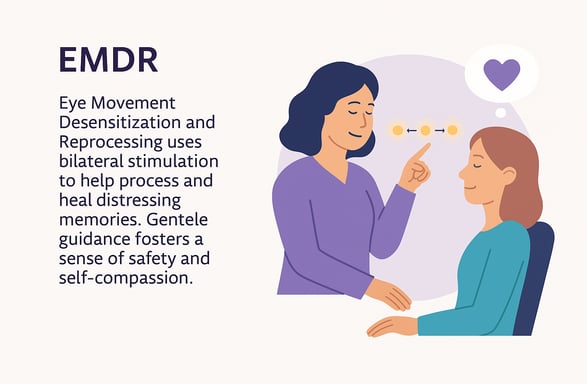Level 2 - Eye Movement Desensitization and Reprocessing
Level 2: Advanced EMDR Protocols and Applications
1. Advanced Bilateral Stimulation Techniques
Visual Tracking: AI-assisted tracking of eye movements via a device screen.
Auditory Tones: AI-controlled bilateral sounds for at-home EMDR self-help.
Haptic Feedback: Wearable devices for vibration-based bilateral stimulation.
2. Complex Trauma Protocols
Fragmented Memory Processing: Adapting EMDR for dissociative clients.
Nested Trauma Resolution: Addressing childhood trauma linked to present-day triggers.
Flash Technique: A gentler EMDR approach for highly distressing memories.
3. AI-Assisted EMDR in DREAM
Automated Memory Mapping: Using NLP to help users identify distressing events.
Guided AI-Led Processing: Virtual therapist assistance in reprocessing events.
Self-Guided EMDR Modules: AI provides interactive exercises tailored to user needs.
4. Enhancing EMDR with AI Emotional Intelligence
EAR (Emotional Acuity Relearner) Support: Personalized emotional validation.
EMP (Empathy Model) Integration: AI ensures supportive, therapeutic responses.
Real-Time Mood Assessment: AI detects distress levels and adjusts intervention strategies.
5. Time-Series Data for Trauma Recovery
SNN-Based Pattern Recognition: Identifying patterns in emotional distress.
Calendar-Based Progress Tracking: Associating EMDR sessions with mood improvements.
Longitudinal Analysis: AI-assisted recognition of long-term healing trends.
6. Ethical AI Implementation in EMDR
User Control: Ensuring users can pause or exit AI-guided EMDR at any time.
Privacy Protections: Data encryption and zero raw-text storage.
AI vs. Human Therapist Balance: DREAM AI augments but does not replace licensed professionals.


© 2025. DREAMHEALER.ORG All rights reserved.
